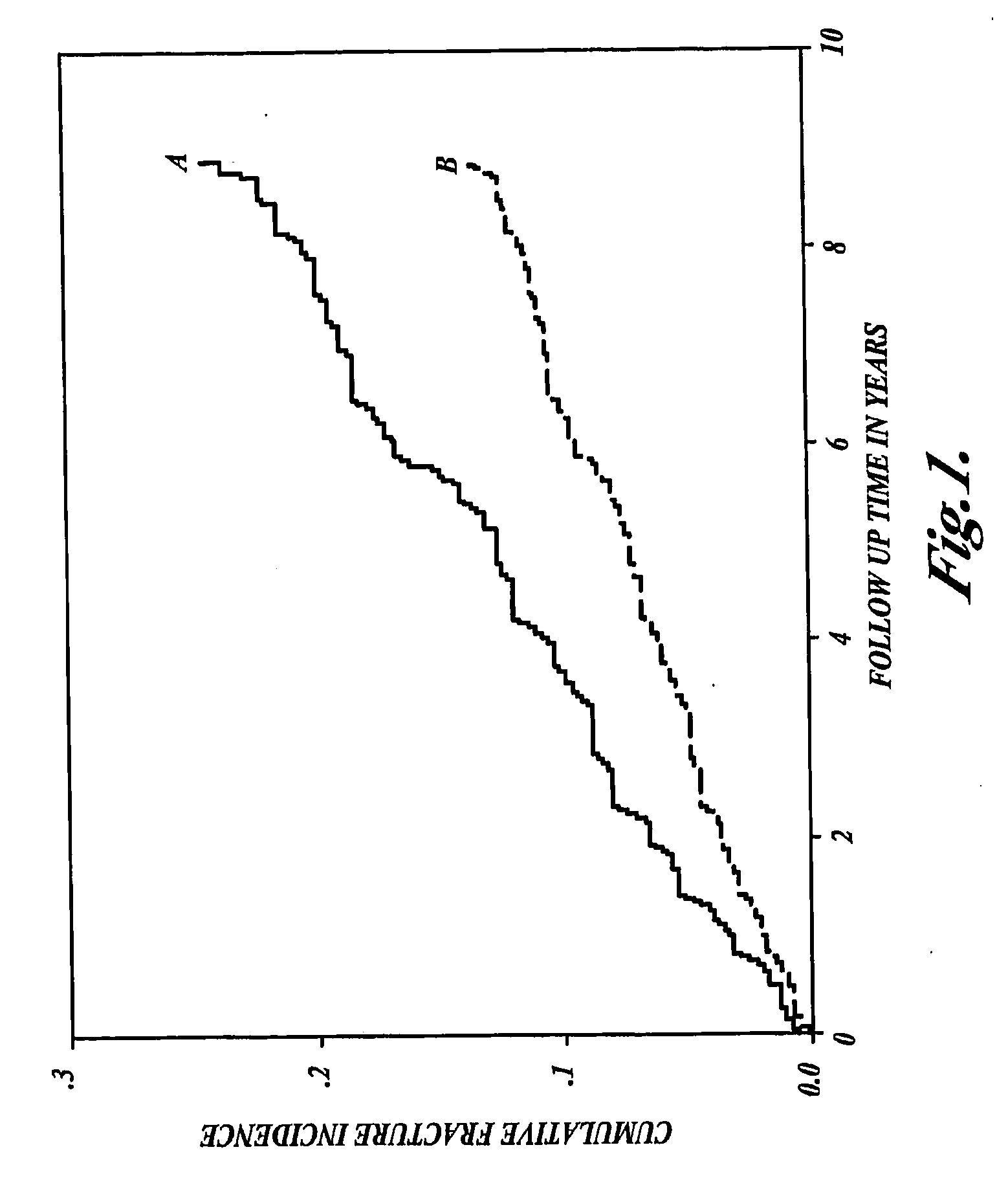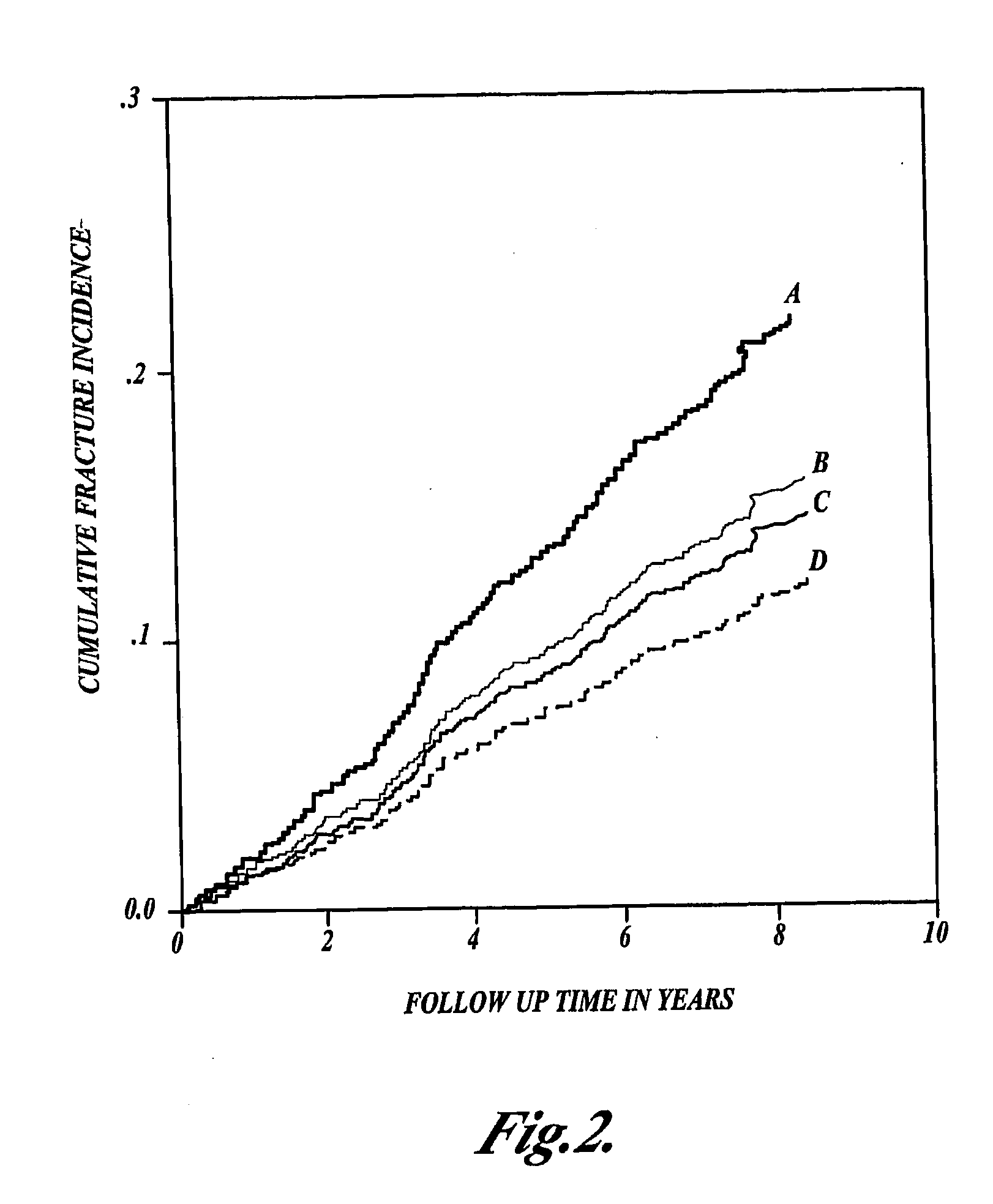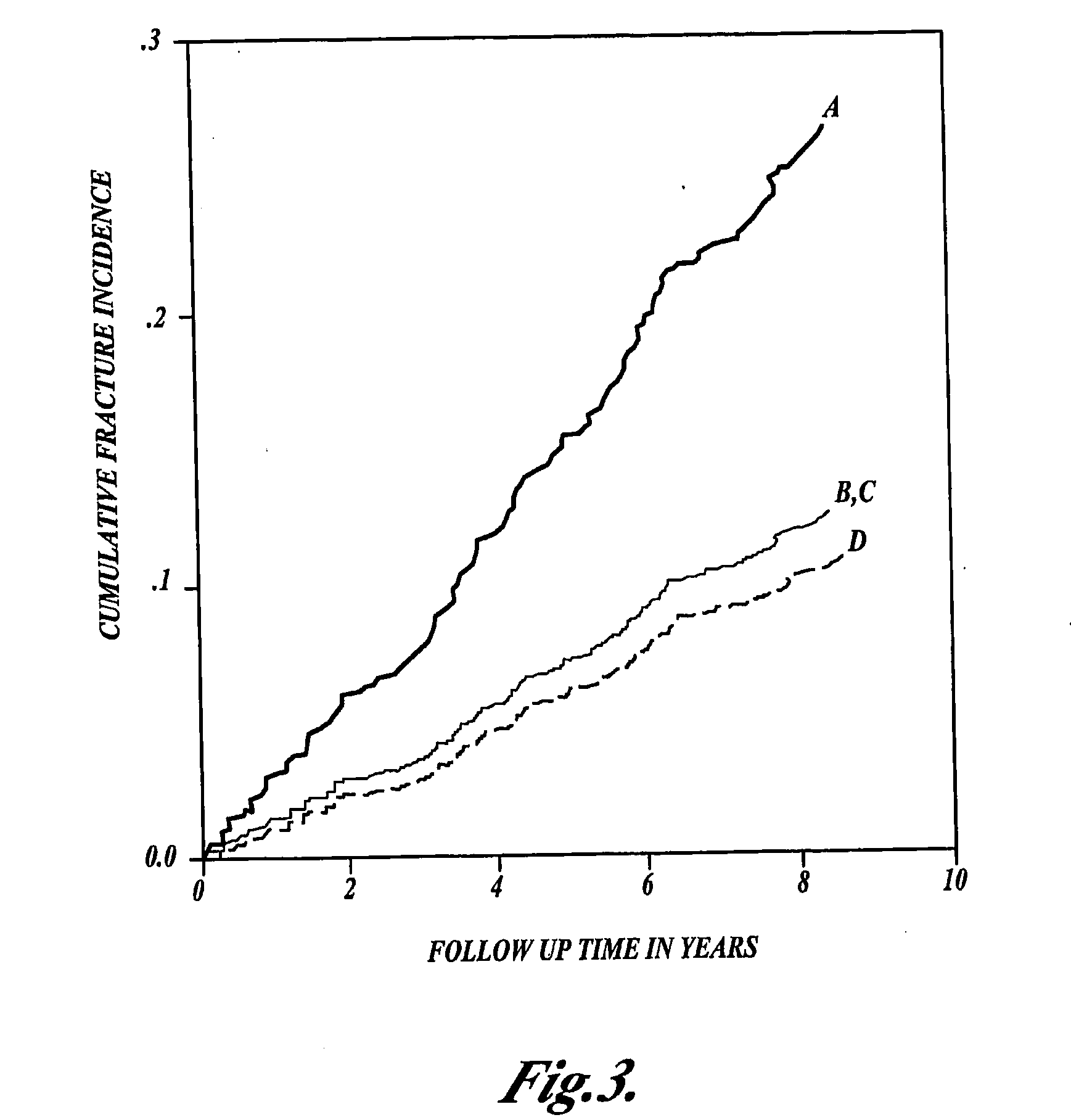Susceptibility to bone damage
a susceptibility and bone technology, applied in the field of bone damage susceptibility, can solve the problems of reduced bone mineral density (bmd), increased risk of bone damage, deterioration of bone micro-architecture, etc., and achieve the effect of increasing the risk of bone damage and increasing the susceptibility to bone damag
- Summary
- Abstract
- Description
- Claims
- Application Information
AI Technical Summary
Benefits of technology
Problems solved by technology
Method used
Image
Examples
example 1
[0088]This Example describes a study examining the relationship between serum homocysteine levels in postmenopausal women, incidence of fracture, and bone marrow density (BMD).
1. Methods
[0089]A. Study Subjects
[0090]The Rotterdam Study is a population-based cohort study of 7983 subjects aged 55 years or more, residing in the Ommoord district of the city of Rotterdam in the Netherlands. The study was designed to document the occurrence of disease in the elderly in relation to several potential determinants (Hofman et al. (1991) Eur. J. Epidemiol. 7:403-422). A total of 10,275 persons, of whom 9161 (89%) were living independently, were invited to participate in the study in 1991. In those subjects living independently, the overall response rate was 77% for home interview and 71% for examination in a research center, including measurement of anthropometric characteristics, BMD, and blood sampling. The Rotterdam Study was approved by the Medical Ethics Committee of the Erasmus University...
example 2
[0106]This Example describes a study examining the interaction between polymorphisms in the COLIα1 gene and the MTHFR gene in relation to BMD and fracture risk.
1. Methods
[0107]A. Study Subjects
[0108]For the analysis of the association between the MTHFR gene, the COLIα1 gene and fracture risk and BMD, a subgroup of women was studied. Baseline measurements of BMD were available for 5931 independently living subjects from the study, but 1453 of these were excluded based on use of a walking aid, diabetes mellitus, use of diuretic, estrogens, thyroid hormone, or cytostatic drug therapy. From remaining subjects, a random sample of 1533 women, aged 55-80 years was studied. Follow-up data for non-vertebral fractures and vertebral fractures was available for 1374 of these and 955 of these, respectively.
[0109]B. Measurements
[0110]Measurements were made as described in EXAMPLE 1, above.
[0111]C. Determination of COLIα1 and MTHFR Genotypes
[0112]Genomic DNA was extracted from peripheral venous bl...
example 3
[0130]This Example describes a study examining the relationship between a polymorphism in the MTHFR gene, homocysteine levels, fracture risk, and BMD.
1. Methods
[0131]For a description of the methodology used, please see EXAMPLES 1 and 2, above.
2. Results
MTHFR Polymorphism and Homocysteine
[0132]In an analysis of the homocysteine levels according to MTHFR genotype, no differences were observed between homocysteine levels in the different genotype groups. One important factor in the association between the MTHFR-variant and homocysteine levels is the plasma folate status (Ma et al. (1996) Circulation 94:2410-6; Jacques et al. (1996) Circulation 93:7-9; Harmon et al. (1996) Quarterly J. Med. 89:571-7). This is in part determined by dietary intake of folate, for which data were available. When mean homocysteine values were adjusted for dietary folate intake, 222Val carriers were found to have a 0.7 μM / l higher homocysteine serum level compared to non-carriers, but this did not reach sign...
PUM
| Property | Measurement | Unit |
|---|---|---|
| Density | aaaaa | aaaaa |
Abstract
Description
Claims
Application Information
 Login to View More
Login to View More - R&D
- Intellectual Property
- Life Sciences
- Materials
- Tech Scout
- Unparalleled Data Quality
- Higher Quality Content
- 60% Fewer Hallucinations
Browse by: Latest US Patents, China's latest patents, Technical Efficacy Thesaurus, Application Domain, Technology Topic, Popular Technical Reports.
© 2025 PatSnap. All rights reserved.Legal|Privacy policy|Modern Slavery Act Transparency Statement|Sitemap|About US| Contact US: help@patsnap.com



